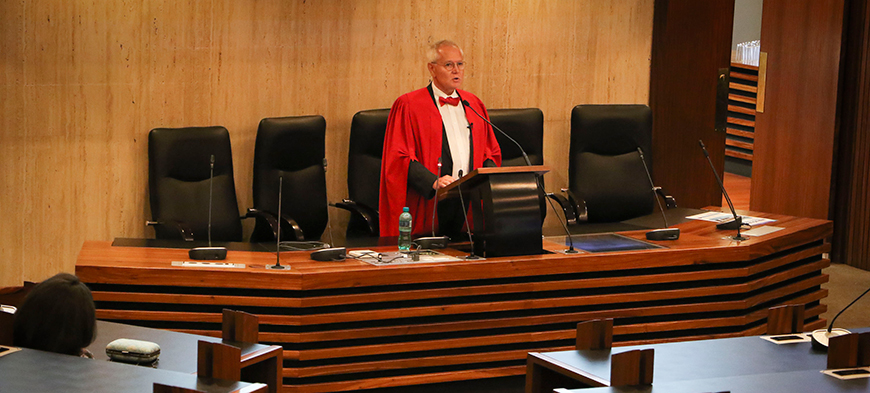The cost of free tertiary education might push South Africa over the edge
- Wits University
Professor Jannie Rossouw gives a stern warning to the country's leaders on the consequences of over expenditure of government revenue.
At a time when South Africa is facing huge financial pressures, and the possibility of a looming fiscal cliff, the costs of free tertiary education, among other things, might just push the country over the edge.
This is the view of Professor Jannie Rossouw, head of the School of Economics and Business Science at Wits University, who delivered his Inaugural Lecture on Tuesday, 22 November.

Rossouw, who has spent the major part of his career at the Reserve Bank and held the position of Deputy General Manager, said that for the Government to finance free tertiary education, it would cost an estimated R50 billion extra per year.
“There is no free lunch,” said Rossouw. “Somebody has to pay for it, and in the case of free tertiary education, it will be paid for by those I call ‘We, the South African tax payers’. This, ladies and gentlemen, is for our accounts.”
The additional R50 billion – or “R50 million with a lot of zeros” – said Rossouw is equal to a surcharge of nearly 12% on income tax, or an increase of 2.5 percentage points in VAT, or an increase of 7% in company tax.
“Increasing the marginal tax rate to 45% from 41% on taxable income above R1 million per annum, and to 50% on annual taxable income above R1.5 million will add only 30% of the required amount, or R15 billion,” said Rossouw. “We, the South African tax payers, should brace ourselves for substantial tax increases, going forward.”
In a research paper published in 2014, Rossouw warned that government was facing a looming fiscal cliff in 2026. A fiscal cliff, he said, was when all government revenue is expended on social grants and civil servant remuneration.
“By 2002, South Africa had 4.2 million people who received social grants. This number of recipients increased rapidly, as take-up increased, with 16 million people receiving social grants,” said Rossouw.
“Therefore, currently some 30% of South Africans are grant recipients, and these grants account for some 12% of the government’s revenue.”
At the same time, civil service remuneration amounts to about 44% of government revenue, and about 12% of South Africa’s Gross Domestic Product (GDP).
“This compares unfavourably with other emerging economies, like Chile, where civil service remuneration amounts to 6% of GDP, or Peru, where civil service remuneration is equal to some 5% of GDP.”
Rossouw warned that the rate of growth in government expenditure should be contained and that a fiscal cliff should be averted to avoid the South African credit risk downgrade. However, he warned, despite the looming fiscal cliff, further expenditure increases might be on their way.
Along with the pressures of free tertiary education, the government also faces the pressure on the implementation of National Health Insurance, and President Jacob Zuma is pushing for South African investment in nuclear power plants and. There are also plans to purchase a new presidential airplane.
“Purchasing a new plane can only be described as ‘fiscal lunacy’, given the many other fiscal demands in South Africa. It might have a negative demonstration effect that could see this country going up in flames. It is not clear that those in power understand how serious this matter is,” said Rossouw.

